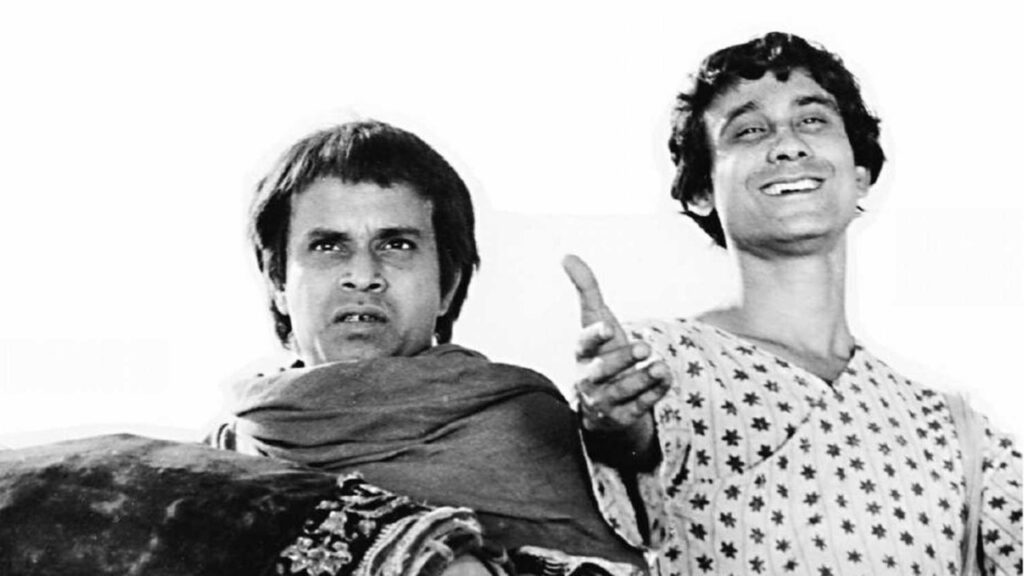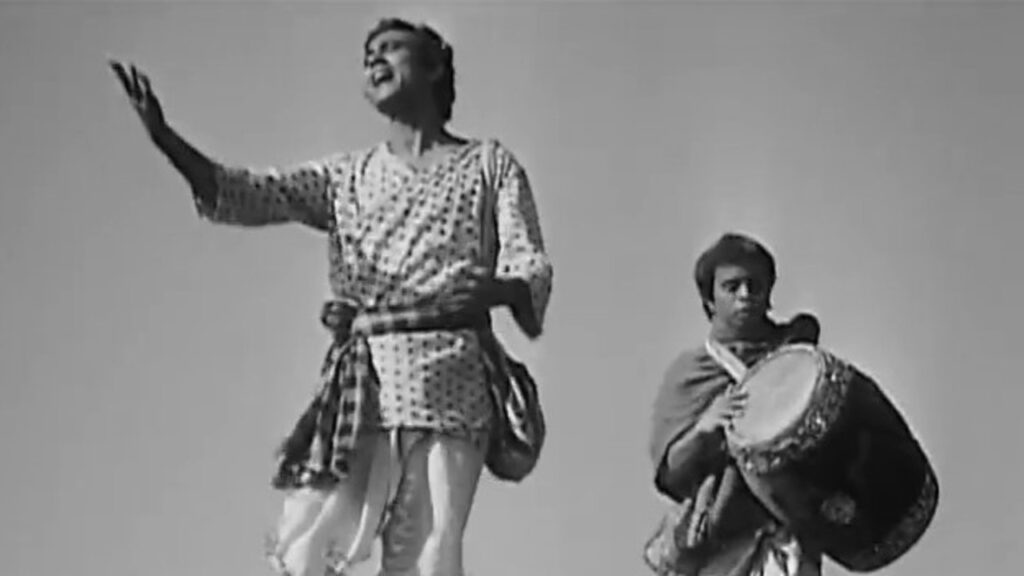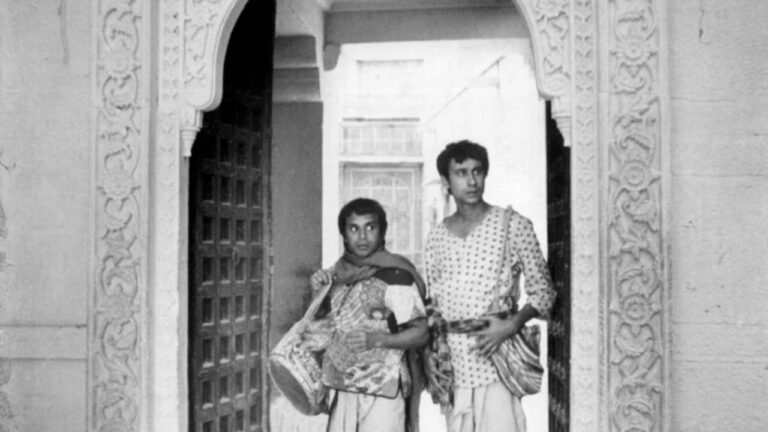Satyajit Ray is someone who is still widely celebrated for his masterful realist cinema, particularly through films such as The Apu Trilogy (Pather Panchali, Aparajito, Apur Sansar). His later works, such as Charulata and Mahanagar, demonstrated his extraordinary versatility as a filmmaker. While Ray was renowned for exploring the subtleties of everyday life, with human psychology and social issues, his 1969 ghost-fantasy comedy movie Goopy Gyne Bagha Byne marked a significant departure from these serious, contemplative narratives.
Instead of the grounded realism and emotional depth characteristic of his work, this film combined elements such as humor, with colorful characters, and imaginative storytelling, and through this shift, he crafted a tale filled with enchanting music, magical happenings, and clever moral lessons, while proving that his narrative skills were not confined to realistic portrayals of human struggle. He showcased that his work could also enchant, entertain, and attract audiences of all ages, and demonstrate his ability to traverse genres and tones with equal finesse.
From Magical Boons to Timeless Adventures

The film follows two hapless musicians, named Goopy, who is a singer, and Bagha, who plays a ‘dhol’, and their lack of talent leads to their exile from their respective villages. Their misfortune takes a turn when they encounter the Bhooter Raja (King of Ghosts) in a forest, who was moved by their plight. The King grants them three extraordinary boons: the power to create music that delights everyone, the ability to travel anywhere instantly, and the gift of food and clothing appearing wherever they go. Armed with these powers, the two happy namod musicians, Goopy and Bagha, set out on an adventure to prevent war between the kingdoms of Halla and Shundi, using their music to promote peace and justice.
The narrative, though simple, is layered with clever humor and imaginative scenarios. Ray uses fantasy as a lens to explore human greed, power, and reconciliation, but always keeps the tone light and accessible. The story’s charm lies not only in its plot but also in the warmth and chemistry between the two protagonists. Tapen Chatterjee, who played the character of Goopy and Rabi Ghosh as Bagha, brings their characters to life with impeccable comic timing and innocence, making them fan favorites.
The Music, given the fact that the movie is about two musicians, plays a central role in the film, and Ray himself composed the soundtrack, blending elements of traditional Indian music with his own inventive style. The ‘Bhooter Naach’ (Dance of Ghosts) stands out as a particularly enchanting segment, incorporating the Carnatic classical rhythm of ‘Tani Avartanam’ while perfectly complementing the magical tone of the film.
Generations United by Goopy and Bagha’s Adventures

The film’s legacy is beyond comparison and words, because commercially, it was a resounding success, running for a record 51 weeks in Bengal. Critically, it earned Satyajit Ray the National Film Award for Best Feature Film and Best Director, solidifying its status as a classic. Its popularity led to two sequels, Hirak Rajar Deshe (1980) and Goopy Bagha Phire Elo (1992), the latter directed by Ray’s son, Sandip Ray, continuing the magical adventures of the beloved duo. Over decades, the film has remained a cultural touchstone for Bengali cinema and a gateway for younger audiences to explore Ray’s wider oeuvre.
Today, Goopy Gyne Bagha Byne remains widely available on streaming platforms and in DVD collections, ensuring that new generations can experience Ray’s inventive storytelling. It is a film that combines humor, music, fantasy, and moral insight in a way that is both entertaining and meaningful. Whether for its musical brilliance, imaginative storytelling, or sheer charm, it stands as a testament to Satyajit Ray’s mastery and enduring legacy in Indian cinema.




